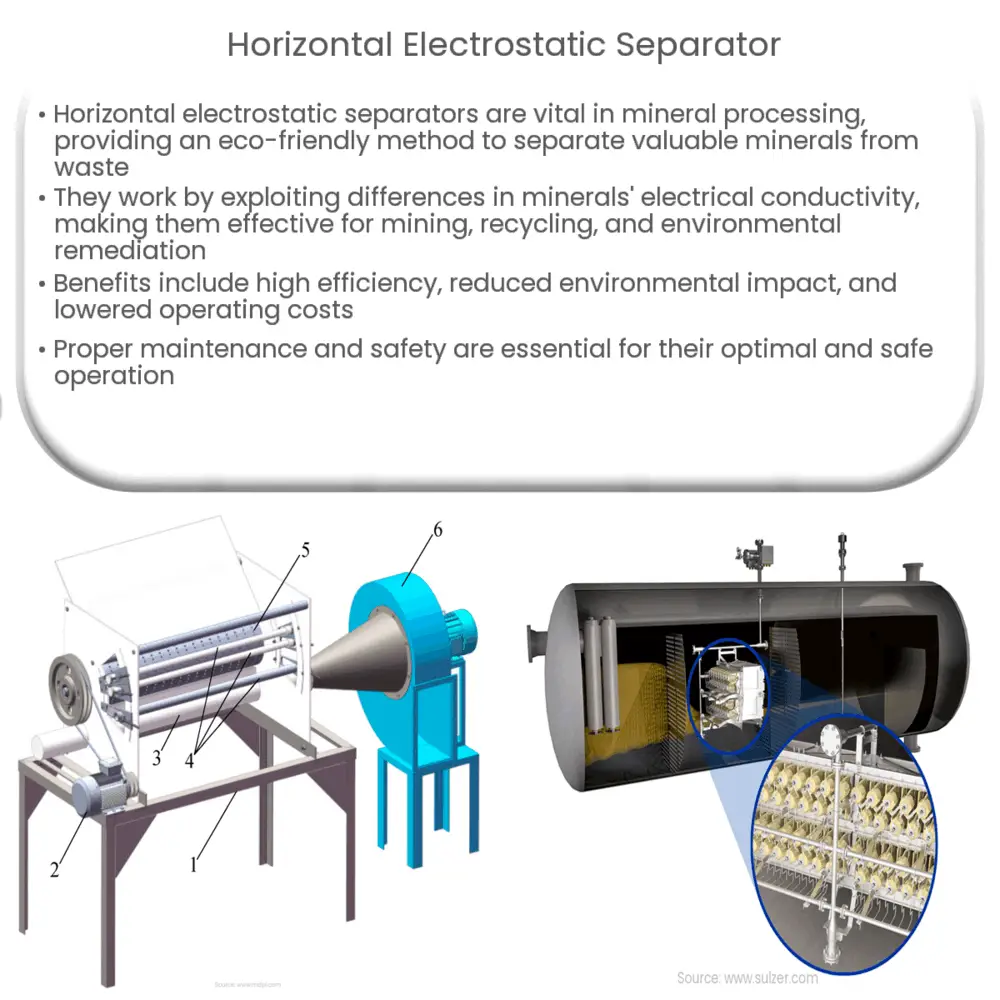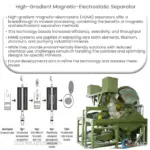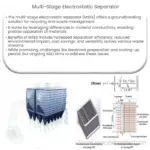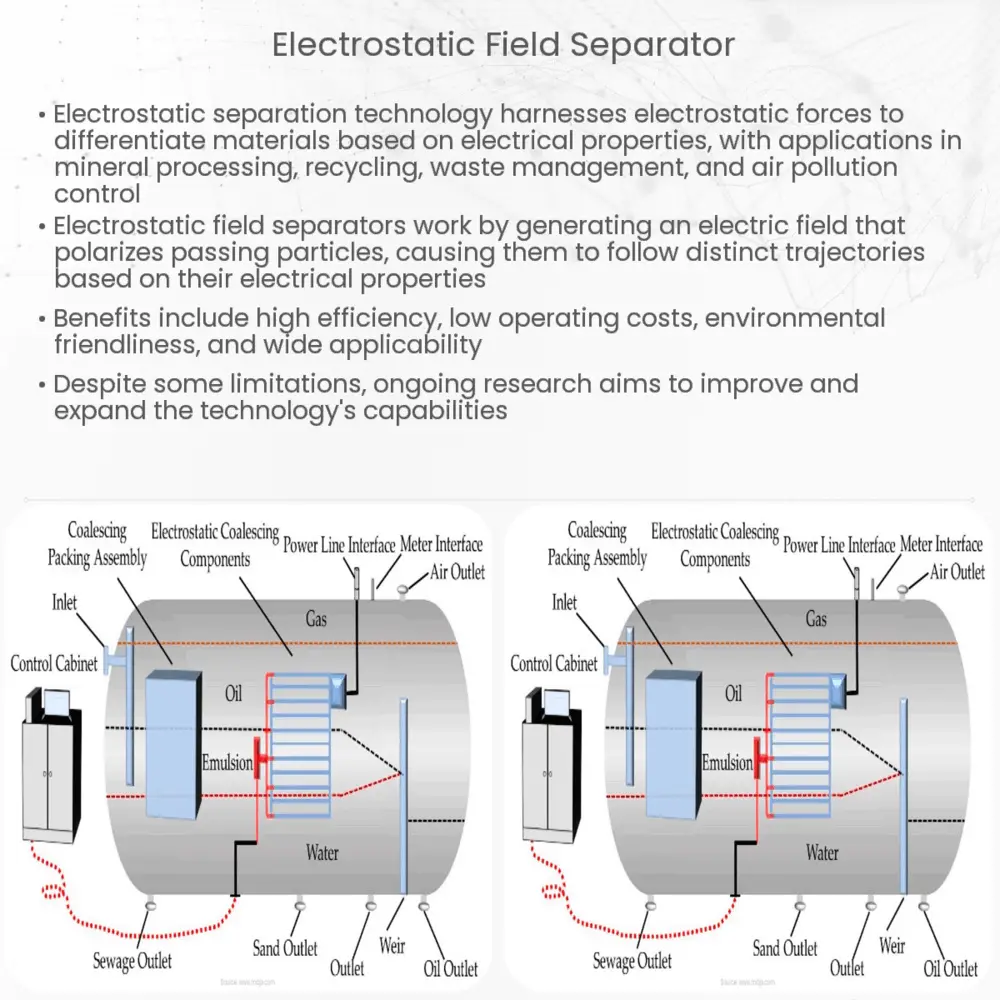Horizontal electrostatic separators efficiently separate minerals using electric fields, offering eco-friendly solutions for mining and recycling.

Horizontal Electrostatic Separator: An Overview
Introduction
The horizontal electrostatic separator is an essential piece of equipment in the minerals processing industry, offering an efficient and environmentally friendly method for the separation of valuable minerals from waste materials. With the continuous depletion of high-grade ores, the need for efficient separation technologies has become increasingly important to maintain the profitability and sustainability of mineral extraction operations. In this article, we will provide an overview of the working principles, applications, and benefits of horizontal electrostatic separators.
Working Principle
Horizontal electrostatic separators operate on the principle of electrostatic separation, which exploits the differences in electrical conductivity between various minerals. The process begins with the introduction of a feed material, typically a crushed and dried ore, onto a vibrating conveyor belt. As the material moves along the conveyor, it is exposed to an electric field generated by high-voltage electrodes positioned above and below the belt.
When the particles pass through the electric field, they become electrically charged due to the differences in their electrical conductivity. The charged particles are then attracted to or repelled by the electrodes, causing them to separate from each other. The degree of separation achieved depends on several factors, including the mineral composition, particle size, and the strength of the electric field. The separated materials are then collected in separate bins or hoppers for further processing or disposal.
Applications
Horizontal electrostatic separators find applications in a variety of industries, including:
- Mining: The primary application of horizontal electrostatic separators is in the extraction of valuable minerals from ores. They are particularly effective in the separation of heavy minerals, such as zircon, ilmenite, and rutile, from sand deposits. Additionally, they can be used to separate metal ores, such as copper, lead, and zinc, from gangue minerals.
- Recycling: These separators can also be used in the recycling industry to separate metals from non-metallic materials, such as plastics and glass. This application is particularly relevant in the recovery of precious metals, such as gold and silver, from electronic waste.
- Environmental remediation: Horizontal electrostatic separators can be employed to remove heavy metals and other contaminants from soil and sediments, contributing to the remediation of polluted sites.
Benefits
There are several advantages to using horizontal electrostatic separators in mineral processing and other industries:
- High efficiency: Electrostatic separation is highly efficient in separating particles with different electrical conductivities, often achieving separation efficiencies greater than 90%.
- Low environmental impact: Unlike other separation methods, such as froth flotation, electrostatic separation does not require the use of chemicals, reducing the potential for environmental harm.
- Reduced operating costs: As they require less water and energy than other separation techniques, horizontal electrostatic separators can help reduce operating costs.
Design and Configuration
Horizontal electrostatic separators come in various designs and configurations to cater to the specific needs of different applications. Some of the key design features include:
- High-voltage electrodes: The electrodes are responsible for generating the electric field required for the separation process. They can be configured in different shapes and sizes, depending on the application requirements.
- Adjustable electric field strength: The strength of the electric field can be adjusted by varying the voltage applied to the electrodes, allowing operators to optimize the separation efficiency for different feed materials.
- Vibrating conveyor belt: The conveyor belt transports the feed material through the electric field and helps to distribute it evenly, ensuring efficient separation. The vibration frequency and amplitude can be adjusted to optimize the separation process for different particle sizes and materials.
Maintenance and Safety Considerations
As with any industrial equipment, proper maintenance and safety measures are crucial to ensure the reliable and safe operation of horizontal electrostatic separators. Some of the key aspects to consider include:
- Regular inspection: Inspect the separator components regularly to identify any signs of wear, damage, or corrosion. Early detection of potential issues can help prevent equipment failure and costly downtime.
- Cleaning and maintenance: Keep the separator clean and well-maintained to ensure optimal performance. This includes cleaning the electrodes, conveyor belt, and other components as required, as well as replacing worn or damaged parts.
- Safety precautions: As high voltages are involved in the operation of electrostatic separators, it is crucial to follow safety guidelines and procedures. This may include installing safety interlocks, grounding the equipment, and providing appropriate training to operators.
Conclusion
Horizontal electrostatic separators offer a highly efficient and environmentally friendly method for separating valuable minerals from waste materials in various industries, including mining, recycling, and environmental remediation. With their adjustable electric field strength and versatile design features, these separators can be tailored to meet the specific requirements of different applications. By implementing proper maintenance and safety measures, horizontal electrostatic separators can provide a reliable and cost-effective solution for the separation of materials based on their electrical conductivity.




